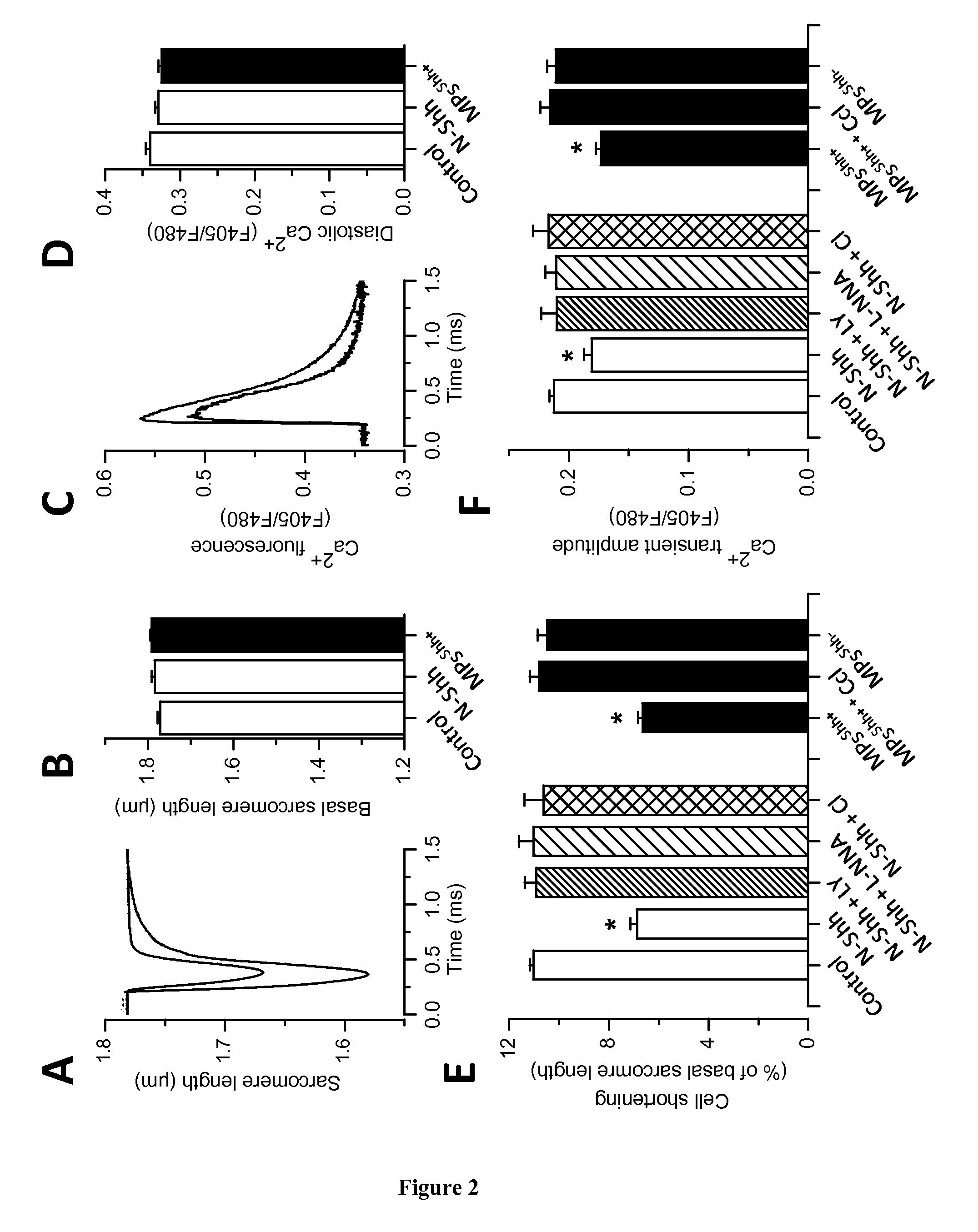Methods for treating myocardial infarction comprising administering sonic hedgehog
a technology of myocardial infarction and sonic hedgehog, which is applied in the field of methods and pharmaceutical compositions for cardioprotection of subjects, can solve the problems of irreversible damage to tissues, increased intracellular calcium concentration and heart rate, and damage to heart muscle tissu
- Summary
- Abstract
- Description
- Claims
- Application Information
AI Technical Summary
Benefits of technology
Problems solved by technology
Method used
Image
Examples
example 1
Sonic Hedgehog Signaling Modulates Excitation-Contraction Coupling in Adult Ventricular Myocytes
[0055]Material & Methods
[0056]Ethics Statement
[0057]The experiments conformed to the National Institutes of Health Guide for the Care and Use of Laboratory Animals (NIH Pub. No. 85-23, Revised 1996) and All procedures conformed to the European Parliament Directive 2010 / 63 / EU and the Council of 22 September 2010 on the protection of animals”.
[0058]Isolated Cell Preparation
[0059]Ventricular cardiomyocytes were isolated from 200-250 g male adult Wistar rats as previously described1. The rats were anesthetized by i.p. injection of pentobarbital sodium (100 mg / kg) with heparin (100 U). The heart was rapidly excised, rinsed in ice-cold Hanks-HEPES buffer (in mM: NaCl 117, KCl 5.7, NaHCO3 4.4, KH2PO4 1.5, MgCl2 1.7, HEPES 21, glucose 11.7, taurine 20, pH at 7.15) mounted on a Langendorff perfusion system and perfused (3 ml / min, at 37° C.) first with Hanks-HEPES buffer for 5 min to be cleared fro...
example 2
Cardioprotective Effect of Shh Signaling Pathway
[0106]The rats were subjected to 30 min ischemia followed by reperfusion. The reperfusion injuries were histologically evaluated at 24 h after reperfusion by measuring the infarcted area relative to the area at risk (FIG. 9). Fifteen minutes prior to reperfusion, one group of rats received intravenous (iv) injection of the recombinant Shh homolog ligand (N-ShhH, 25 μg·kg−1), the second group received N-Shh and the Shh receptor (patch / smoothened) antagonist cyclopamine (N-Shh+Ccl, 30 μmol / L) and the third one the vehicle (control). These experiments demonstrated a significant reduction of the infracted area with N-Shh treatment. This cardioprotective effect of N-Shh was fully prevented by cyclopamine. These in vivo data demonstrate the potent role of Shh signaling pathway to protect the myocardium against reperfusion injuries after acute myocardial infarction (AMI). Considering that the cardio-protective effects are observed within a sh...
PUM
| Property | Measurement | Unit |
|---|---|---|
| molecular weight | aaaaa | aaaaa |
| time | aaaaa | aaaaa |
| length | aaaaa | aaaaa |
Abstract
Description
Claims
Application Information
 Login to View More
Login to View More - R&D
- Intellectual Property
- Life Sciences
- Materials
- Tech Scout
- Unparalleled Data Quality
- Higher Quality Content
- 60% Fewer Hallucinations
Browse by: Latest US Patents, China's latest patents, Technical Efficacy Thesaurus, Application Domain, Technology Topic, Popular Technical Reports.
© 2025 PatSnap. All rights reserved.Legal|Privacy policy|Modern Slavery Act Transparency Statement|Sitemap|About US| Contact US: help@patsnap.com



